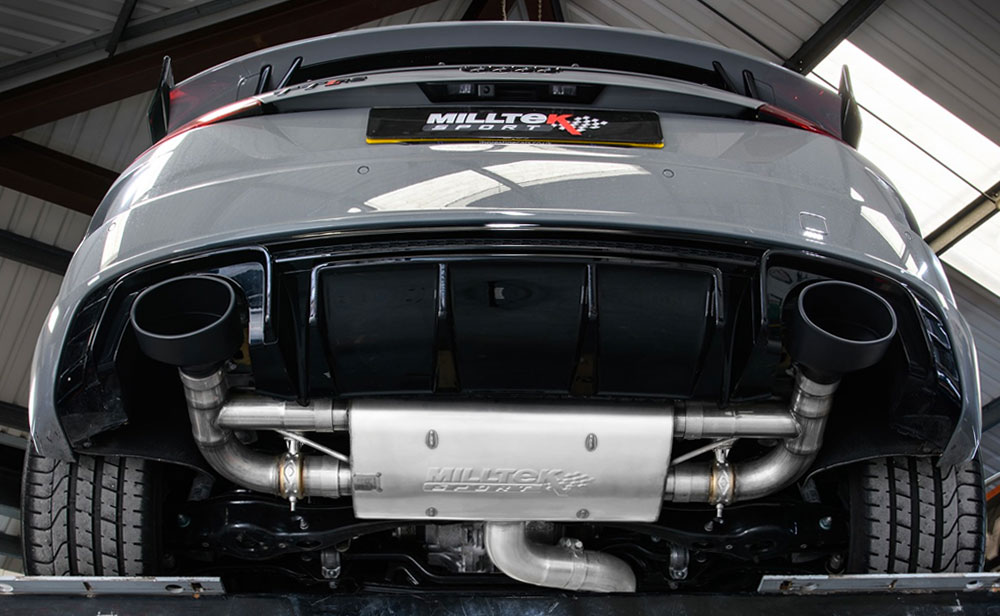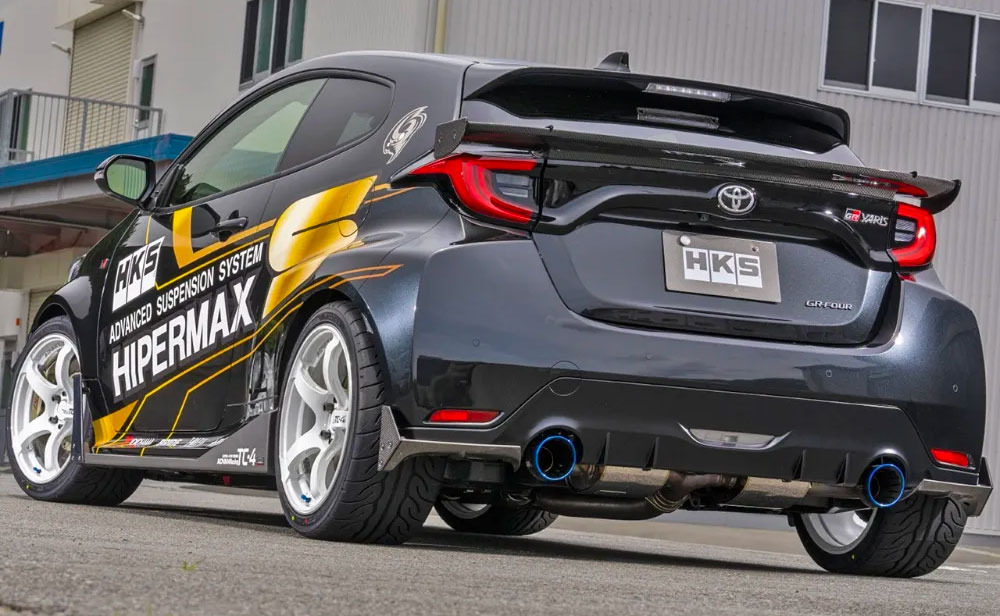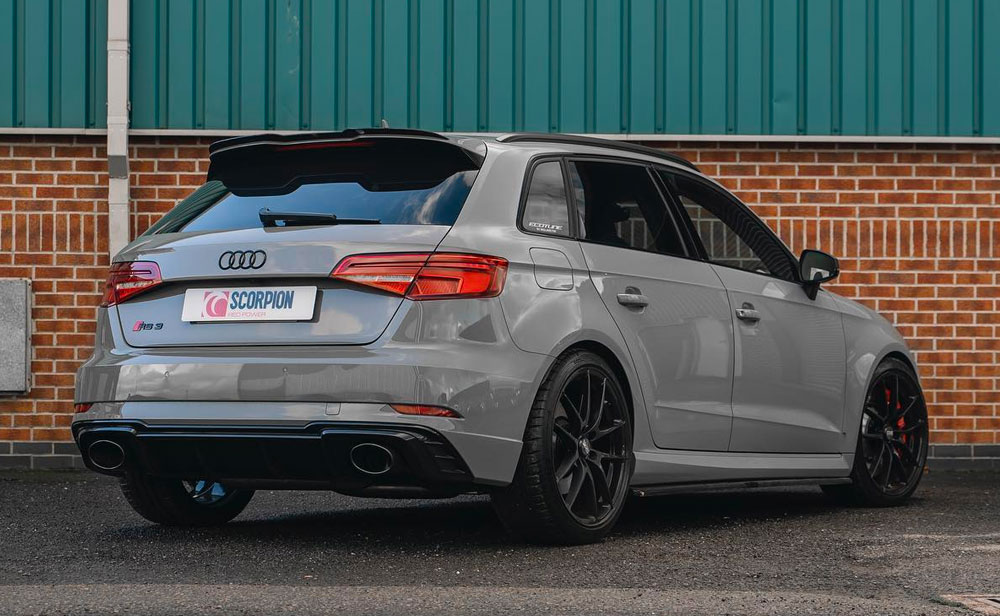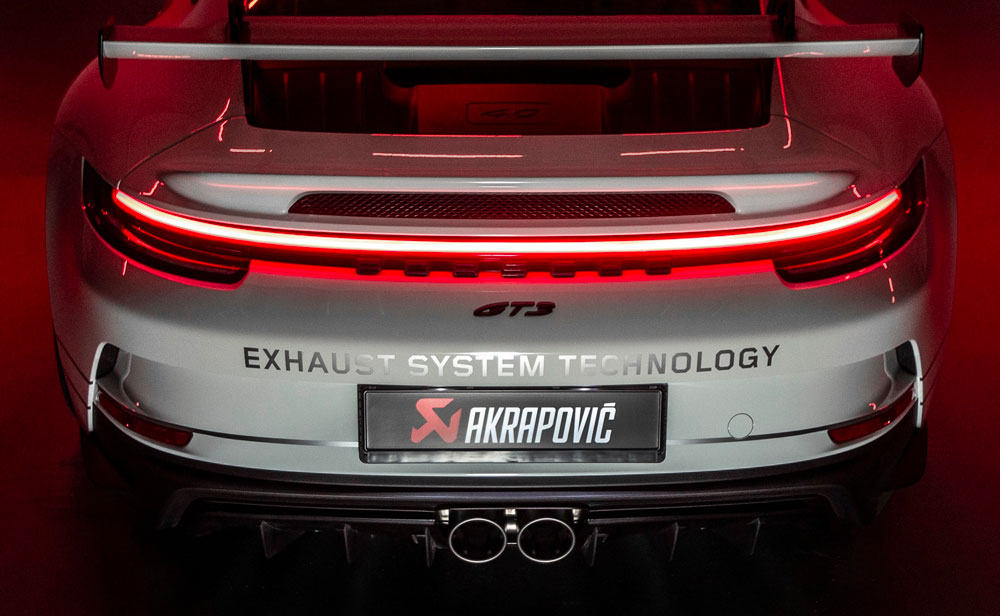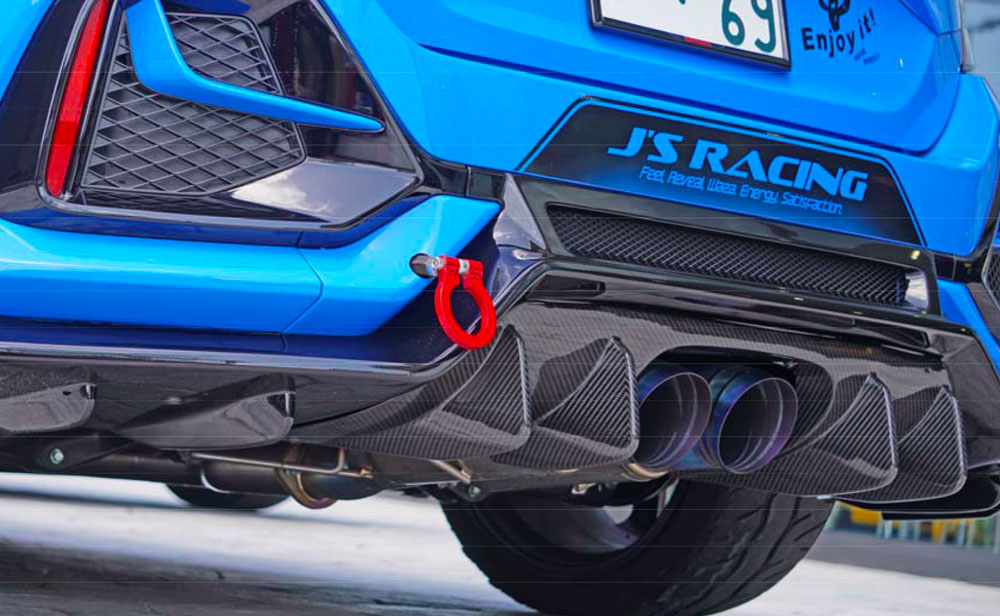What is a performance exhaust? Everything you need to know!
What is a performance exhaust? Everything you need to know!
In the realm of automotive performance, the exhaust system plays a pivotal role in optimising engine performance and enhancing the overall driving experience. While the stock exhaust system serves its purpose in efficiently removing exhaust gases, a performance exhaust system takes things a step further, delivering noticeable gains in power, sound, and weight reduction.
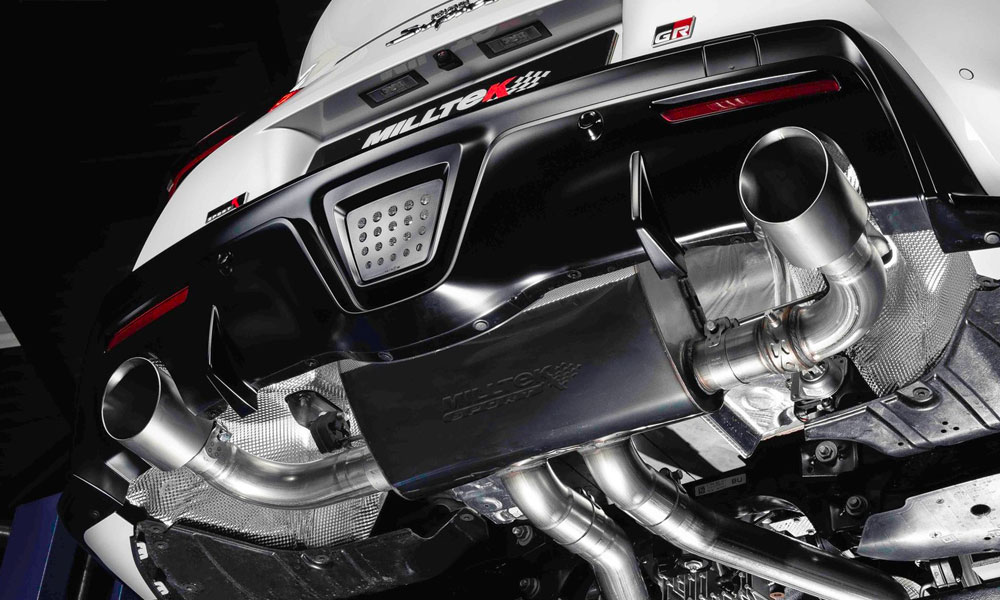
Here at Tegiwa, we’ve been manufacturing our own exhausts for performance Honda’s for many years so performance exhausts are something that we know a lot about. We’ve also helped a countless amount of customers upgrade their exhaust too, supplying many of the industries leading exhaust brands such as Milltek Sport, Akrapovic and HKS. With that being said, we’ve learned one thing first hand and that’s how tricky it can be to choose the right system, especially where there’s so many technical terms. We’re hoping that we can guide you along in the right direction by answering some of the common questions in this blog.
What are the benefits of installing a performance exhaust system?
Sound
If you’re new to the tuning scene, then you might be wondering what benefits there might be from upgrading the exhaust system. Let’s start with the most obvious reason. Sound. Whilst the stock exhaust has to meet certain requirements from the manufacturer, a performance exhaust doesn’t. It has been designed by each manufacturer to produce a desired sound and tone without worrying too much about regulations. So, if you want a sportier or more aggressive tone from your car, then replacing the exhaust is the first port of call.
Performance
You’ll also benefit from increased performance too. This is because a performance exhaust has been designed to flow exhaust gases quicker and more efficiently. The quicker you can get rid of gasses from the engine, means the quicker you can get fresh air in, and therefore more bhp. Exhaust manufacturers have many different ways of speeding up this procedure, from increasing pipe diameter to the layout of the exhaust itself. We’ll delve into this more technical side, later on in the blog.
Weight Reduction
You’d be surprised as to how much the stock exhaust system on your car actually weighs. Swapping this out for an aftermarket exhaust system is sure to save you a decent chunk of weight. This is usually because it loses some of the resonators (more on these later), or is constructed from a lighter, hard-wearing material such as stainless steel or titanium. For example, the Akrapovic Race Line Exhaust System for the Toyota GR Yaris offers a huge weight saving of 7.8kg over the stock part!
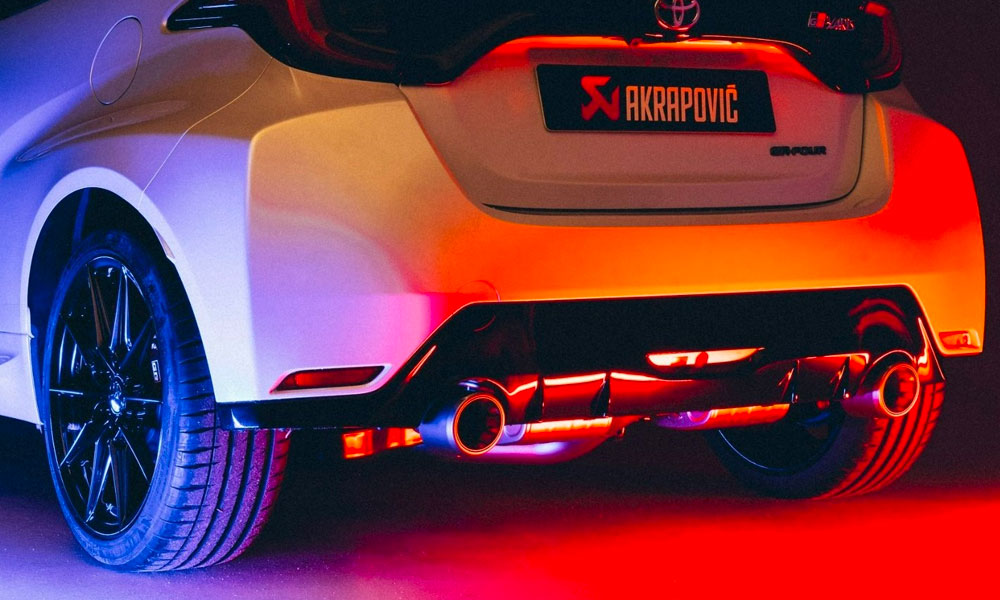
What are the different types of exhaust systems?
Essentially, when you’re upgrading to an aftermarket exhaust system, you’re simply choosing how much and where you’re replacing parts of the standard system. In this next part of the blog, we’ll explore the various parts that can be replaced and what difference they make.
Cat-Back, OPF-Back exhausts and GPF-Back exhausts
A cat-back exhaust is the most common upgrade that we see when people are replacing their exhaust system. This part of the exhaust starts from the end of the catalytic converter right the way back to the end of the exhaust. Usually, it consists of a resonator, a back box, tail pipes and all supporting pipe work.
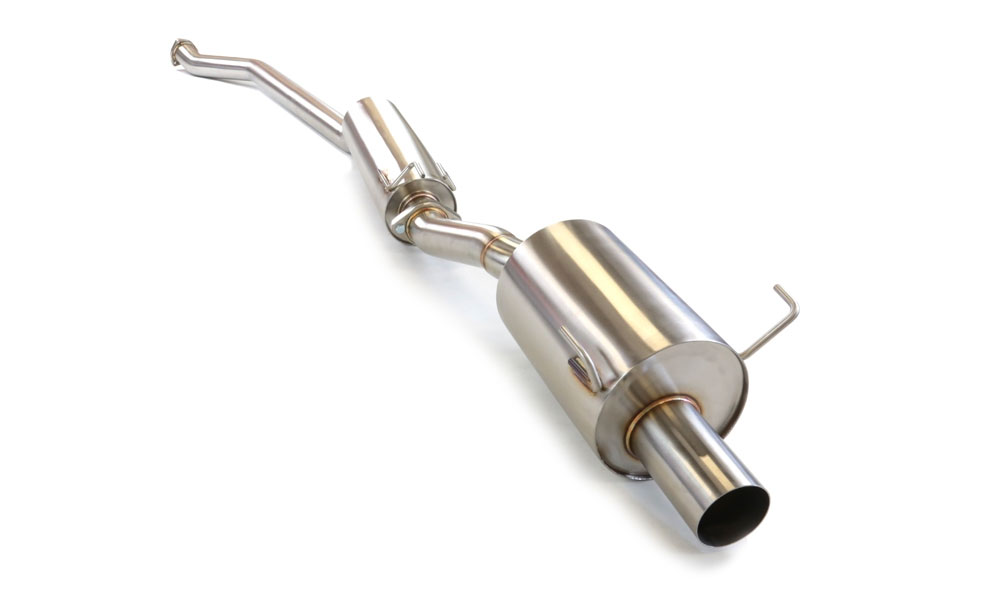
You might have heard of these two exhaust parts being referred to as different things (an OPF-back (Otto Partikelfilter) or GPF-back exhaust (Gasoline Particle Filter)), but they are in fact the same thing. These are a much more recent phenomenon as car manufacturers have installed additional hardware on the exhaust to reduce emissions. A GPF-back exhaust will start from the end of the GPF and runs all the way back to the tail pipe, just like a cat-back.
How do you know if your car has a GPF?
As a simple rule of thumb, if your vehicle was produced after September 2018 and has a direct injection engine, then you’ll most likely find that a GPF is equipped to your exhaust.
Downpipes
The down pipe is the piece of exhaust that connects the turbo to the rest of the exhaust system, usually connecting to the cat-back exhaust. These can be installed on their own or after a cat-back exhaust if you’re wanting to unlock more power. Often, if you’re just installing a down pipe, you’ll find that you’ll be increasing the pipe diameter from the turbo but it’ll then flow into the narrower stock exhaust.
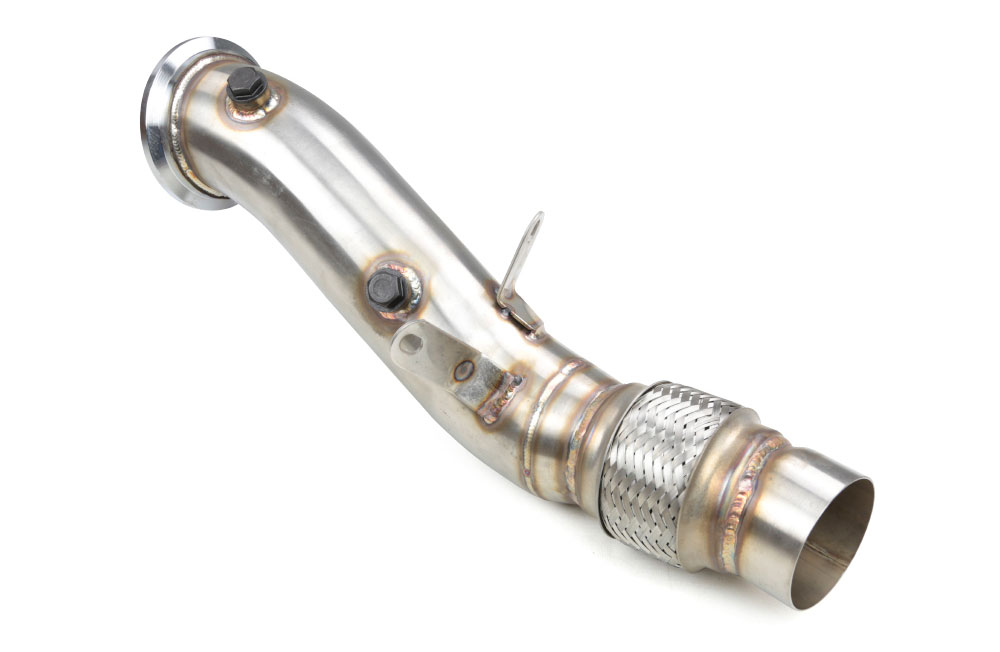
Sports Cat, Race Cat or Decat?
Usually when you replace the down pipe, you’ll be replacing the OEM catalytic converter too. There are a number of options to choose from here. You can choose a performance catalytic converter, known as a sports cat or race cat which will usually pass a UK MOT. You can also choose a decat, which means that you remove the catalytic converter completely. This is the most beneficial for performance, however, installing a decat will deem your car illegal for the road in the UK and you won’t pass a MOT. To unlock the full benefit of installing an aftermarket downpipe, we’d recommend a remap as that will tell the ECU that it’s got a better flowing exhaust to flow through.
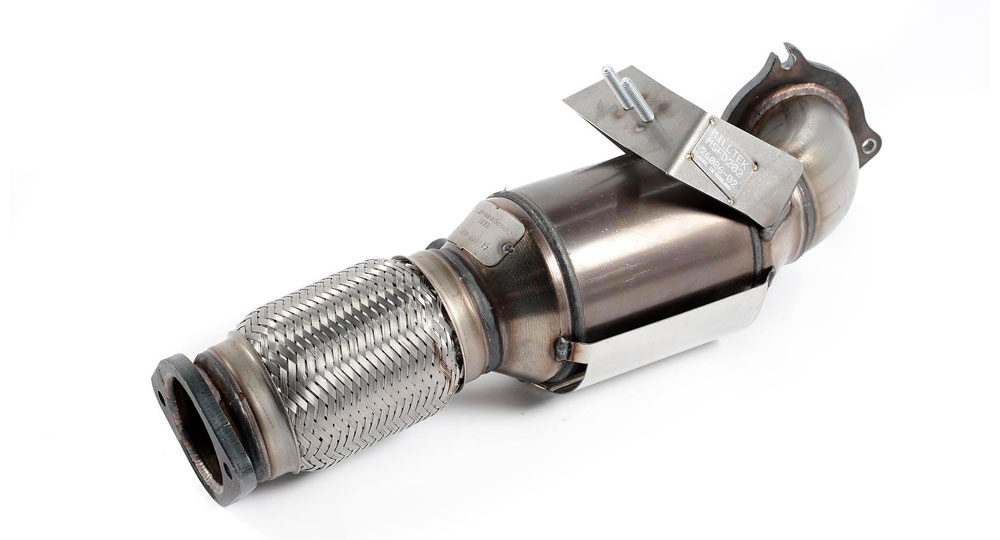
Turbo-back
This type of exhaust system is only applicable to those with a turbocharged car. This will completely replace the stock exhaust system on your car from the turbo, right down to the tail pipes. Completely changing the exhaust means you can usually choose a range of different options from resonators, to catalytic converter options. Commonly, this will also increase the diameter of the exhaust pipework by up to 1″ to allow for increased exhaust gas flow.
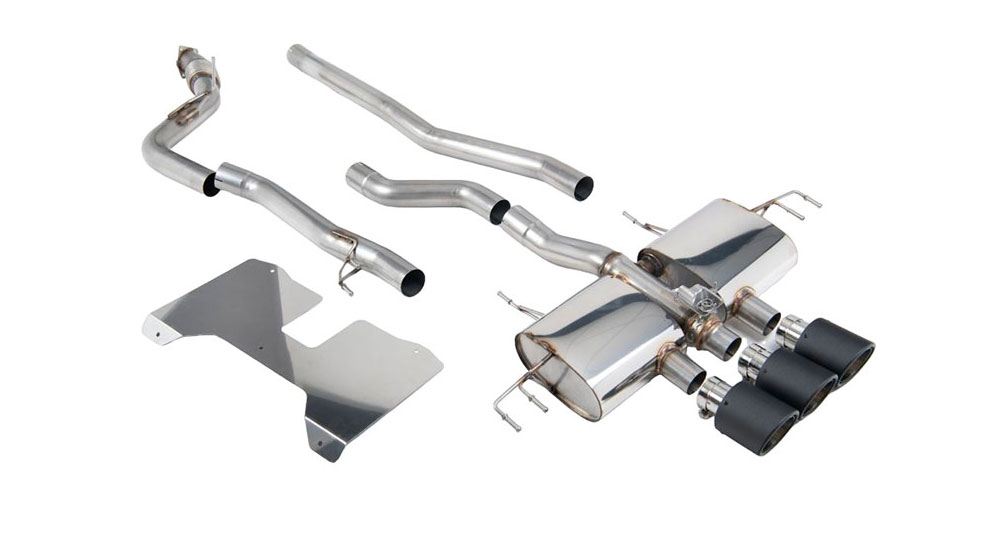
Manifold
The exhaust manifold (or header if you’re American), is the part of the system which connects from the engine to the start of the exhaust system. There are different configurations which explain how the pipework collects, for example, a 4-2-1 manifold goes from four pieces of pipe, to two pieces and eventually gathers as one piece at the end.
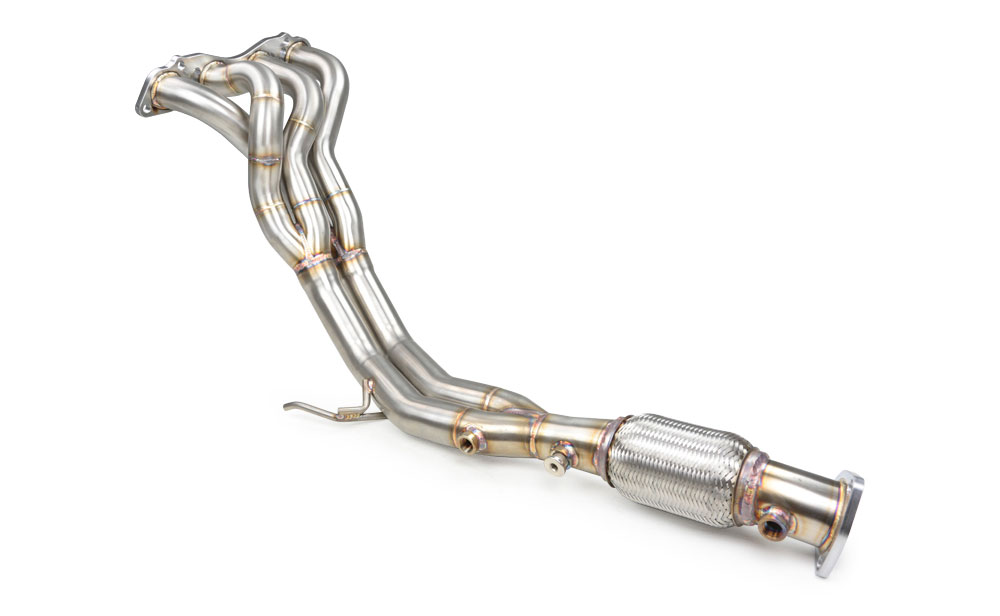
Back Box
The back box is pretty straight forward. It’s the large silencer located at the end of the exhaust system, usually with the tail pipes connected to it. Often you’d change the exhaust from the cat-back, but in some cases you can just change the back box. This won’t really make a difference in terms of performance, but it may provide a better exhaust note.
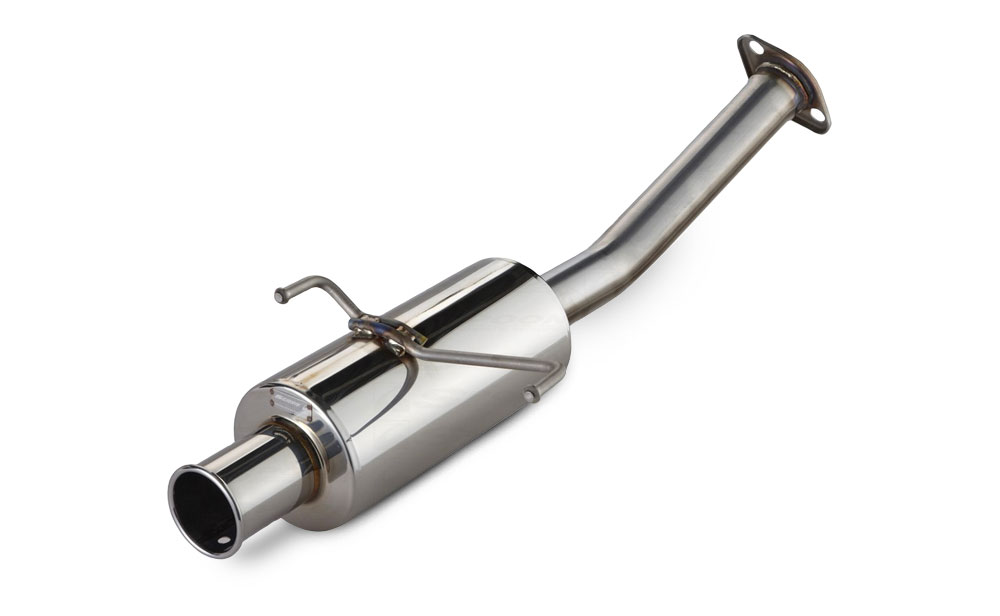
Jargon Buster
Hopefully you’re now a little bit wiser as to what range of exhausts are available. However, there are still a number of words that we’ve used that might have left you scratching your head. Read on, and we’ll aim to solve these questions!
Resonated or Non-resonated?
A resonator is essentially a silencer. Usually your car will leave the factory from standard with at least one resonator as well as a fairly hefty back box too. These resonators are designed to cut out certain sound frequencies to prevent the exhaust from droning and making too much noise. A non-resonated system means there is no silencer, therefore, it’ll make more noise. This is definitely something to think about when choosing an exhaust system as a non-resonated system may be too much for a daily driver, whereas, if you only use your car at the weekend, then you might want all the drama that a non-resonated system can offer.
Pipe Diameter
Aftermarket exhausts usually benefit from a larger pipe diameter than standard, usually a performance exhaust is 3″ but can vary dependent on vehicle and exhaust manufacturer. Generally, if you have a turbocharged car, then you’ll want a bigger pipe diameter to expel gases quicker. However, if you’re car is naturally aspirated, bigger isn’t always better.
Catalytic Converter
A catalytic converter is the part of exhaust that helps to reduce your cars emissions by changing harmful substances that your engine produces into less harmful gases by means of a chemical reaction. To be compliant with UK law, your car must retain its catalytic converter. A de-cat pipe is designed specifically for track and race use only.
Slip-fit system
A slip-fit exhaust describes a system that simply slips together using a range of exhaust clamps and fixings. Some of the most popular slip-fit companies include Milltek Sport, Scorpion and Cobra Sport.
Flanged system
A flanged exhaust system is where each piece of the exhaust pipework is joined by a flange. They are connected with either a 2, 3 or 4 bolts and a gasket in between. Generally most Japanese exhaust brands like HKS, Invidia and Fujitsubo use this type of system.
Valves
In some cases, a car may leave the factory with electronically controlled exhaust valves that can open and close from the switch of a button. These are great for controlling the tone and volume of your exhaust.
What exhaust brands are available at Tegiwa?
Over the years we’ve built up quite the collection of exhaust brands on our website which we’re extremely proud of! If there’s a particular brand of exhaust that you’d like and you can’t see it on our website, then please don’t hesitate to drop us a message as we’d be more than happy to try and supply it for you.
Milltek Sport
Of course we had to kick this list off with Milltek Sport, especially seeing as we have our very own website featuring the entire Milltek exhaust catalogue! Milltek cater for pretty much every performance vehicle ever made and are always expanding their range. Check out their awesome range of exhausts, here.
Tegiwa
As we previously mentioned, we’ve been manufacturing our own exhausts for years! Our Civic EP3 and FN2 exhausts are still as popular now, as they were when we first released them. We have a range of manifolds and cat-backs available for a range of performance Honda’s.
HKS
Originating in Japan, HKS are synonymous with the JDM tuning scene. We have a range of HKS exhaust options including applications for various Civic Type R’s, S2000’s and GTR’s. In fact, the HKS Super Turbo Muffler was our favourite cat-back exhaust that we tested during our GR Yaris exhaust test!
Remus
Looking for an exhaust with bite? Look no further than Remus! Remus exhausts are infamous for providing aggressive exhaust sound tracks with fantastic build quality. You’d normally associate Remus with VAG or BMW, but they have a collection that suits near enough everyone.
Kakimoto
Another Japanese exhaust manufacturing brand, Kakimoto Racing, provide a great range of exhausts for the Honda brand. Kakimoto have a great heritage in racing and this is certainly something that has been passed down to their road applications.
Cobra Sport
Manufactured right here in the UK, Cobra Sport offer a huge range of exhausts for a wide range of vehicles. If you’re looking to get the loudest sound from your exhaust then you’ll definitely want to check out their range of Venom exhausts!
Scorpion
We’re pleased to supply the Scorpion range of exhausts, which are also manufactured in the UK. From day one, Scorpion’s focus has been on production based motorsport as this gives their engineers the ability to transfer their race proven technologies with their road going customers.
Akrapovic
When it comes to the most premium of exhaust systems, then Akrapovic have to take that title. Their catalogue boasts some incredible applications for some of the worlds mightiest of supercars. Their exhausts sound phenomenal and are crafted from some of the lightest materials such as titanium and carbon fibre!
Fujitsubo
Through its endless research and development in its ISO certified manufacturing facility, all Fujitsubo exhausts are engineered with the highest quality control and are thoroughly tested to ensure optimum performance while keeping a reasonable sound level. We can supply options for Honda’s as well as the GR Yaris too.
Martelius
Martelius Exhausts is a specialist exhaust company from Finland who manufacture performance exhaust manifolds, specialty exhaust systems, tube forming and exhaust silencing technology with more than 30 years experience. Martelius carry out all exhaust solutions optimised for their specific end use purpose, be it motorsport or tuned street vehicles.
Revel
Revel are an exhaust company from the USA who make the Medallion Touring-S exhaust. This system offers an extremely clean, deep, low tone that is pleasant and aggressive at all RPM ranges. These exhausts are constructed from SUS304 stainless-steel, are fully hand TIG welded and feature a straight through muffler design that gives better flow for increased power and allows for a lighter weight system.
Invidia
Invidia are a well-respected Japanese brand that provide top quality exhausts. If you’re looking to bring more noise to your vehicle then the G200, Q300 and N1 exhaust systems are some of the most popular exhaust systems utilised on modified Japanese vehicles today!
J’S Racing
When it comes to the ultimate JDM performance exhaust for a Honda then it’s hard to look past J’S Racing. Their range of titanium exhausts aren’t cheap, but they’re super light and sound absolutely awesome!



